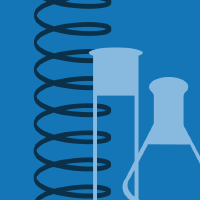Topic Editors



New Analytical Methods in Plant Active Components Analysis
Topic Information
Dear Colleagues,
Plants are well known as one of the greatest resources of active components that are usually used for the development of new drugs, functional foods, and dietary supplements. The discovery of new biologically active compounds from natural sources seems to be the main objective of many pharmaceuticals and food companies. Current research trends clearly indicate that natural active components will be among the most significant sources of new drugs in the future. Due to the complexity of plant active chemical constituents, the development of new robust, efficient, sensitive, and cost-effective methods to improve separation, extraction, and purification of these compounds is of great interest, which may provide the necessary basis for further study of the bioactivity, structure–activity relationships, metabolisms in vivo, structural modification, and synthesis of active compounds. This topic, “New Analytical Methods in Plant Active Component Analysis”, covers a selection of research articles, communications, or reviews that explore plant active compounds’ isolation and structural determination via analytical methods, including chromatography, mass spectrometry, spectroscopy, and electroanalysis. We are particularly interested in articles describing new analytical strategies for determining active compounds in plants, with selected applications linked to current trends in food chemistry, the environment, biology, and pharmaceuticals. Novel applications and the optimization of existing analytical methods are also welcome.
Dr. Filomena Lelario
Dr. Giuliana Bianco
Prof. Dr. Radosław Kowalski
Topic Editors
Keywords
- chromatography
- mass spectrometry
- active compounds
- natural product extracts
- separation technology
- analytical techniques
- method optimization
- plants
- phytochemicals
- bioactivity
- plant metabolites
- structural elucidation
- hyphenated techniques
Participating Journals
| Journal Name | Impact Factor | CiteScore | Launched Year | First Decision (median) | APC | |
|---|---|---|---|---|---|---|

Analytica
|
- | - | 2020 | 15.6 Days | CHF 1000 | Submit |

Antioxidants
|
7.0 | 8.8 | 2012 | 13.9 Days | CHF 2900 | Submit |

Applied Sciences
|
2.7 | 4.5 | 2011 | 16.9 Days | CHF 2400 | Submit |

Molecules
|
4.6 | 6.7 | 1996 | 14.6 Days | CHF 2700 | Submit |

Separations
|
2.6 | 2.5 | 2014 | 13.6 Days | CHF 2600 | Submit |

MDPI Topics is cooperating with Preprints.org and has built a direct connection between MDPI journals and Preprints.org. Authors are encouraged to enjoy the benefits by posting a preprint at Preprints.org prior to publication:
- Immediately share your ideas ahead of publication and establish your research priority;
- Protect your idea from being stolen with this time-stamped preprint article;
- Enhance the exposure and impact of your research;
- Receive feedback from your peers in advance;
- Have it indexed in Web of Science (Preprint Citation Index), Google Scholar, Crossref, SHARE, PrePubMed, Scilit and Europe PMC.
Published Papers (3 papers)
Planned Papers
The below list represents only planned manuscripts. Some of these manuscripts have not been received by the Editorial Office yet. Papers submitted to MDPI journals are subject to peer-review.
Title: Development, validation, and application of HPLC-DAD method for simultaneous determination of ginkgolic acids and ginkgols in ginkgo biloba.
Authors: Isaac Duah Boateng; Fengnan Li; Xiao-Ming Yang
Affiliation: Jiangsu University
Abstract: Ginkgo biloba leaves (GBL), with many phytoconstituents, also contain a toxic substance named ginkgolic acids (GA). Our previous research showed that heating could decarboxylate and degrade GA into ginkgols with enormous bioactivities. Several methods are available to measure GA in GBL, but no analytical method has been developed to measure ginkgols and GA simultaneously. Hence, for the first time, an HPLC-DAD method was established to simultaneously determine GA and ginkgols using acetonitrile (0.01% trifluoroacetic acid, v/v) as mobile phase A, water (0.01% trifluoroacetic acid, v/v) as mobile phase B. Gradient elution conditions were: 0-30 min, 75%-90% phase A; 30-35 min, 90%-90% phase A; 35-36 min, 90%-75% phase A; 36-46 min, 75%-75 % phase A. The detection wavelength of GA and ginkgol was 270 nm. The flow rate and injection volume were 1.0 mL/min and 50 μL, respectively. The linearity was excellent (R2 > 0.999), and the RSD of precision, stability, and repeatability of total ginkgols were 0.20%, 2.21%, and 2.45%, respectively, in six parallel determinations. The recoveries of low, medium, and high groups were 96.58%, 97.67%, and 101.52%, respectively. The limit of detection of ginkgol C13:0, C15:1, and C17:1 were 0.61 ppm, 0.50 ppm, and 0.06 ppm, respectively. Finally, this method was able to accurately measure the GA and ginkgol content in ginkgo leaves and ginkgo tea products and Principal component analysis (PCA) was performed to visualize the association between GA and ginkgols and 5 different processing methods for GBL. Thus, this research provides an efficient and accurate quantitative method for the subsequent detection of GA and ginkgols in ginkgo tea.

